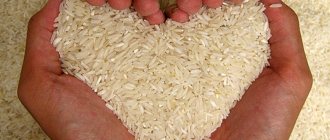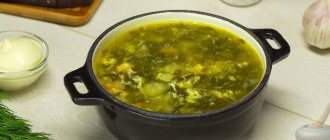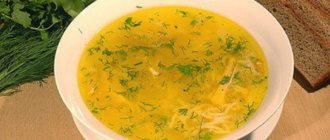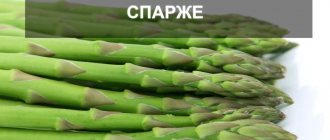Garlic is a perennial plant, which is a tuber consisting of cloves covered with a peel. Due to the large number of beneficial properties, it has found wide use in cooking as a spice and folk medicine, as it helps in the fight against many diseases. Based on it, various products are prepared for the treatment of women, men and children. However, it is necessary to take into account the possible harm of garlic to the body.
- Cleansing drink
- Garlic with cabbage juice or salt
- Infusion with yogurt
- Garlic honey
- Infusion of garlic and lemon
- Elixir for cleaning blood vessels
- Lemon-garlic infusion
- Iodine-garlic ointment
- Garlic-ginger drink
- Garlic and sunflower tincture
How many calories are in garlic healthislife.ru. How many calories are in 100 grams of garlic?
Information for thought: how many calories are in 100 grams. garlic, composition and beneficial properties.
Garlic has amazing properties, the calorie content of which is by no means small. And yet this spicy vegetable plant is popular among those who want to lose weight.
Calorie content per 100 grams:
- white garlic – 143 kcal;
- black garlic – 149 kcal;
- dried garlic – 345 kcal;
- pickled – 42 kcal;
- young green garlic – 40 kcal.
Despite the seemingly high calorie content of garlic, it is among the foods that help burn fat. While garlic contains carbohydrates and proteins, which are the main source of its calorie content, there are practically no fatty acids in its composition. The main three components are correlated in proportion:
- Carbohydrates 80%.
- Proteins 17%.
- Fats 3%.
Composition and beneficial properties of garlic
Garlic contains many vitamins, macro- and microelements. 100 g of edible part contains approximately:
- 180 mg calcium;
- 30 mg magnesium;
- 17 mg sodium;
- 260 mg potassium.
It also contains zinc, iron, iodine, copper, selenium, manganese and other beneficial substances.
How many calories does garlic contain? The calorie content of 100 grams of garlic is 143 kcal.
How many calories are in garlic?
The energy value of garlic, 143 kcal per 100 grams, indeed seems high. But people don’t eat garlic in such quantities. The energy value of one head is only 4 kcal, that is, the maximum “contribution” of 1 clove of garlic can be 1 kcal.
To get the benefits for your figure and health, you should limit yourself to 1-2 cloves per day.
The calorie content of garlic in green arrows is only 24 kcal per 100 g of fresh greens. Therefore, knowing the low calorie content of young garlic, you can not be afraid to add the plant to your dish.
How does garlic work for weight loss?
Why does garlic help you gain weight? It can increase appetite, but at the same time quickly sends a signal to the brain about satiety. This helps a person stop eating on time, preventing overeating.
In addition, garlic stimulates metabolism - this forces the body to quickly burn calories, rather than storing them on the hips and stomach.
At the same time, it stimulates the appetite, and obese people are advised to limit its amount. Garlic will only harm those who consume it in large quantities and are also allergic to this product.
The magic of garlic: it will feed, heal, and reduce weight

Garlic is an amazing vegetable. Its age is more than 5000 years. In folk medicine it has a special place: this plant of the bulbous family is called a cure for all diseases. It contains a huge amount of vitamins and valuable microelements. It is a natural antiseptic and antibiotic. It strengthens the immune system and the heart, dissolves arterial plaques and cleanses blood vessels, treats colds, normalizes blood pressure, prevents diabetes and causes cancer cells to self-destruct.
The bitter root vegetable is actively used in cooking. It gives dishes an appetizing aroma and piquant taste. It is also added to various preparations.
Now it is fashionable to talk about diets and healthy eating. Among the foods that can burn fat is garlic. What is the calorie content of this garden vegetable and how much garlic can you eat so as not to lose weight?
How many calories are in onions? Composition and calorie content of onions
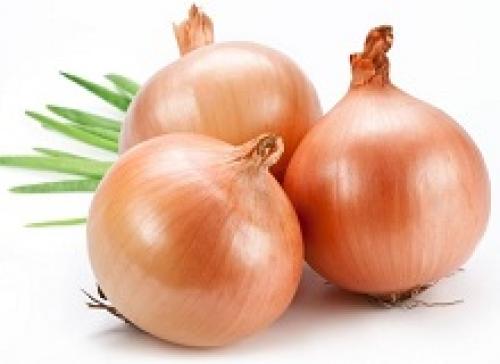
This inconspicuous vegetable has a very rich beneficial composition and is indeed a real medicinal plant that can overcome not seven, but a much larger number of ailments. Onions contain carbohydrates, including simple carbohydrates, fiber, vegetable proteins and a small amount of fatty acids, as well as essential oils and organic acids. The calorie content of onions is 41 kcal per 100 g. One medium onion contains about 30 kcal. The main source of calories contained in onions are complex carbohydrates and proteins, which make onions so filling. At the same time, essential oils and organic acids, which this vegetable is rich in, improve digestion and have the ability to break down fats. This low calorie content in onions, along with its beneficial and fat-burning properties, makes onions an effective product for weight loss.
Onions contain vitamin PP, which normalizes blood sugar and cholesterol levels, as well as strengthens blood vessels, B vitamins, which stimulate brain function and increase stress resistance, as well as normalize metabolism and improve the condition of hair, nails and skin. Onions also contain vitamin C, which explains its ability to boost immunity and fight colds and viral diseases, as well as vitamin E, known for its antioxidant properties. In addition, onions contain vitamin H, which is an effective remedy for beautiful hair and strengthening nails, and also improves the functioning of the nervous system. Fiber, which onions are rich in, helps cleanse the body of toxins and waste, remove excess cholesterol and normalize intestinal function.
In addition to vitamins, this vegetable also contains useful macro- and microelements - calcium, magnesium, sodium, potassium, phosphorus, chlorine, sulfur, iron, zinc, iodine, copper, manganese, chromium, fluorine, boron and others. They strengthen bones and tooth enamel, have a positive effect on vascular health, strengthen the heart, normalize blood pressure, regulate metabolism, prevent anemia, normalize the activity of the endocrine system, stimulate brain activity, and remove excess salt from the body. Onions are extremely useful for the functioning of the cardiovascular system, they have bactericidal properties, and the flavonoids that this vegetable is rich in prevent the formation of cancer cells. It improves digestion and promotes the breakdown of fat cells in the body, which, combined with the low calorie content of onions, makes it an excellent product for diets - for example, the onion soup diet is very popular, which allows you to get rid of quite a lot of extra pounds in a short time. Its essence is to eat for a certain time mainly soup made from onions and other vegetables - this soup is hearty and low-calorie due to the fact that onions, like other vegetables, contain very few calories. The low calorie content of onions and other ingredients of this soup helps reduce the total calorie content of the daily diet, while it speeds up metabolism and promotes the breakdown of fats.
Food calorie table
It’s rare that modern people don’t think about the calorie content of a particular product at least once in their lives - promoting a healthy lifestyle does its job. We invite you to understand this issue: you will find out what a calorie is and why we should control the energy value of our diet.
What is a calorie?
Calorie is a non-systemic unit of energy. It is equated to the amount of heat required to warm a gram of water by one kelvin at an atmospheric pressure of 101,325 Pascal. There are several different definitions of a calorie, since the final value depends on the reference temperature of the water.
The word “calorie” (calorie – French, calor – Lat.) translated means “heat”. Previously, before the creation of modern calorie tables, the terms “small calorie” - in the modern version - calorie and “large calorie” - kilocalorie - were adopted. The concept of “gigacalorie” has found application in public utilities.
Relatively recently, the heat of combustion of fuel was measured in calories, but today this concept is mostly correlated with the energy value (calorie content) of products. The calorie content of foods is measured in kilocalories (kcal). The same quantity is associated with such a concept as “food calorie”. Sometimes calorie tables do not use the prefix “kilo” because this is implied.
How is the calorie content of foods determined?
The calorie content of food is the amount of energy that we receive by completely digesting a particular product. Scientists have learned to experimentally determine this value. To do this, the selected product is placed in a calorimeter, burned and the heat released is measured. Separately, in the calorimeter chamber, the heat generated by the person being tested is measured and the resulting value is converted into “burned” calories (thanks to this, the real, that is, physiological, value of food is learned). These two quantities never coincide - the metabolism in the human body is not capable of absolute oxidation.
What is the difference between the nutritional and energy value of products?
Sometimes these concepts are combined in our minds, yet they have completely different characteristics. Energy value is the energy supply that we receive from food, and nutritional value is the content of fats, proteins and carbohydrates in it (per 100 g of product).
The issue of inconsistency in calorie content of foods
You can often notice a discrepancy in the calorie content of the same product in different tables. American, Asian, and European calorie data are different: vegetables, fruits and animals are grown under different conditions and the chemical composition varies to some extent. Even the yield of vegetables (fruits) affects calorie content - the higher the harvest, the less carbohydrates the fruit contains, and the calorie content decreases accordingly.
Where does the energy go?
Many of us think that calories are burned only in the process of movement, while even during sleep our body expends a lot of energy. About 60% of the energy potential is spent on various physiological processes (hair growth, breathing, cardiac activity, food absorption, etc.). The physiological activity of the average person takes only 25-30% of the calories absorbed per day (ideally, this figure should tend to 40%).
A passive lifestyle threatens a person with many major and minor troubles: muscle weakness, obesity, problems with the heart and blood vessels, metabolic failure, diabetes mellitus.
By eating a couple of “extra” pieces of sugar, we get 40 kcal, which is converted into 3 g of fat. In just a year, this “innocent weakness” grows into 1 kg of excess weight. Considering that in most cases it is not limited to sugar, it is not surprising that body weight is growing much faster.
Optimal calorie intake
The optimal caloric intake of the diet is calculated using special formulas - this figure is purely individual and takes into account age, gender, degree of physical activity and other important factors.
In general, when composing your diet, you should listen to the following recommendations: 1. If you want to lose weight, you need to spend more calories than comes with food 2. The main energy supply should come in the first half of the day - for people who eat rationally, evening meals bring a minimum of calories . 3. You need to get up from the table before you are completely full - a slight feeling of hunger will pass after 15-20 minutes (the body signals satiety with a slight delay). 4. Don’t forget that you need to not only receive calories, but also spend them – sports activities eliminate excess calories and improve your health.
A food calorie table is needed even for those who never torture their bodies with diets. Knowing at least roughly what kind of energy supply the body receives from a particular product, you don’t have to be afraid of obesity.
How many calories are in an egg

Knowing the calorie content of foods is important for anyone losing weight. All diets, to one degree or another, encourage us to control the energy value of food. Since eggs are part of the standard diet of all Russians, the question of how many calories are in an egg interests many. It should be noted that nutritionists have an ambiguous attitude towards this product. Some people recommend eggs for weight loss. On their basis, for example, the nutrition system of endocrinologist Osama Hamdiy was created. Other doctors advise strictly limiting the amount of eggs in your diet. There are regularly recommendations to reduce their consumption to two pieces per week. In this article we will try not only to answer how many calories are in an egg and egg dishes, but also to discuss the advisability of including these products in the menu when fighting excess weight.
How many calories are in different types of eggs?
Most often we use chicken eggs (selected, ordinary or small) and quail eggs for food. How many calories are in an egg depends on its type. Let's look at specific examples. A selected chicken egg weighs about 60 grams. Its calorie content is 94-100 kilocalories. An ordinary chicken egg weighs 50-60 grams. Its calorie content is approximately 78-85 kilocalories in one piece. Small chicken eggs weigh less than 50 grams. Their calorie content per piece is 63-77 kilocalories. You can find out the type of chicken dietary egg by reading the label on the package. Of course, the true calorie content can only be determined by laboratory research. The data we provide is average and varies depending on the time of year, the breed of bird, its age, and the composition of feed at the poultry farm. 100 grams of any chicken egg contains approximately 157-160 kilocalories. There are even more calories in 100 grams of quail eggs - about 168-170. But the eggs of this variety are much smaller. Their weight is about 9-12 grams. How many calories are in the egg of this type of bird? No more than 20 kilocalories in one piece. Other types of eggs are used less frequently in food. A duck or goose egg contains 185 kilocalories per 100 grams, a turkey egg - 165 kilocalories, an ostrich egg - 118 kilocalories. How many calories are in an egg depends primarily on its weight.
How does the energy value of fresh garlic change during cooking?

Despite how many calories nutritionists have discovered in garlic, the aromatic vegetable is very rarely consumed fresh, even by those losing weight. After all, it has a specific smell that can scare away not only vampires, but also everyone around them. And you can’t eat a lot of it, because in large quantities it can lead to gastritis.
The bitter root vegetable is combined with other products. It is clear that this is reflected in its calorie content - it becomes completely different. See how many calories these delicious garlic delicacies have in store for you:
- 1 garlic clove, fried in olive oil – 10 kcal;
- garlic bread (per 100 gram serving) – 323 kcal;
- garlic salt – 27 kcal;
- garlic sauce (store-bought) – 79 kcal; homemade – 339 kcal;
- beet salad with garlic – 108 kcal.
How many calories are in black bread. Harm
Store-bought bread made from premium wheat flour has virtually no beneficial properties for the body. The fact is that in the process of producing such flour, “ballast substances” are removed from cereals - the flower shell (bran), the grain germ (a source of vitamin E) and the aleurone layer of the grain (a source of protein valuable for the body). Then it is bleached so that baked goods from it have an attractive appearance. The result is refined flour with a high starch content, which contributes to the appearance of extra pounds. In addition, factory-made bread made from such flour contains various nutritional additives. These are preservatives (for example, sorbic acid), flavorings, emulsifiers and disintegrants. It is likely that you will eat a lot of this bread, but since it contains harmful carbohydrates with a high glycemic index, you will not feel full. And this is a direct path to extra pounds.
Another point is yeast. Yeast fungi disrupt the intestinal microflora, which impairs digestion and provokes putrefactive processes. In addition, they interfere with the absorption of vitamins and microelements necessary for the body. Under such conditions, toxins accumulate that can provoke many serious diseases (gastritis, seborrhea, gallstones).
When choosing bread in the store, be sure to pay attention to its composition. If you watch your diet and care about the health of your family, make a choice in favor of natural foods.
How much does a piece of bread weigh?
In order to accurately determine the weight of the piece you cut, you can use a kitchen scale. You can use a simpler method of calculation. For example, a loaf of “Borodinsky” weighs 350 g. If you cut it into 10 parts, you will get 10 slices of 35 g each, if you cut it into 20, the weight of each piece will be 17.5 g. Before cutting, conditionally divide the loaf into equal parts. A piece of bread 1.5 cm thick weighs 25-30 g.
Presence of minerals
Compare the composition of different vitamins by clicking on the links below. A table listing each will open on a new page.
| The nutritional value | 157 kcal | 12.7 g | 700 mg | 11.5 g | |
| –> –> –> –> Chicken egg | The nutritional value | 157 kcal | 12.7 g | 700 mg | 11.5 g |
| –> –> –> –> Boiled chicken egg (hard-boiled) | The nutritional value | 158.7 kcal | 12.828 g | 707 mg | 11.616 g |
| –> –> –> –> Boiled chicken egg | The nutritional value | 158.7 kcal | 12.828 g | 707 mg | 11.616 g |
| –> –> –> –> Fried chicken egg (fried egg) | The nutritional value | 174.6 kcal | 14.598 g | 805 mg | 12.557 g |
| –> –> –> –> Quail egg | The nutritional value | 168 kcal | 11.9 g | 600 mg | 13.1 g |
| –> –> –> –> Chicken egg white | The nutritional value | 44.4 kcal | 11.1 g | ||
| –> –> –> –> Chicken egg yolk | The nutritional value | 358 kcal | 16.2 g | 1.78 g | 30.87 g |
| –> –> –> –> Powdered eggs | The nutritional value | 542 kcal | 46 g | 4.5 g | 37.3 g |
How many calories are in buckwheat? All the beneficial properties of buckwheat
Buckwheat porridge and other buckwheat dishes are good for our health and well-being due to their balanced composition and high nutritional value. At the same time, you should not think that the nutritional value of buckwheat porridge is a consequence of its high calorie content. Not at all - the secret of nutrition lies in the large amount of “slow” carbohydrates and complete, easily digestible proteins in its composition.
In no case should you be afraid of the relatively large amount of carbohydrates in raw cereals. As we mentioned above, buckwheat does not contain any fast carbohydrates, which lead to sharp fluctuations in blood sugar levels. All carbohydrates contained in buckwheat are slow, which means that one serving of buckwheat porridge will create a long-term feeling of fullness, despite its low energy value. Thanks to this, buckwheat porridge is excellent for weight loss and can be included in a healthy breakfast, which will help avoid feeling hungry until lunch.
The most valuable nutritional components of buckwheat for people actively involved in sports, and, first of all, weightlifting, are proteins. Here they contain as much as 12.6 grams per serving. At the same time, the amino acid composition of proteins is one of the richest and most balanced among plant foods. Buckwheat proteins contain a large amount of important amino acids - lysine and methionine. At the same time, buckwheat proteins are highly digestible, which makes this grain indispensable in the diet of athletes to speed up muscle recovery after training.
Buckwheat does not contain a single gram of fast carbohydrates, which are responsible for the appearance of excess weight if consumed excessively.
Very often, buckwheat is used as a temporary substitute for meat and other sources of animal proteins. For the same reason, this cereal enjoys stable popularity among vegetarians, for whom its rich amino acid profile is especially important.
As for fats, there is very little of them in buckwheat - only 3.3 grams per serving. At the same time, there are no harmful saturated fats at all. However, it’s not for nothing that the proverb says that “You can’t spoil porridge with butter.” For better absorption and a more pleasant taste of buckwheat porridge, it is better to add a small amount of vegetable oil to it (linseed oil will be especially useful due to the high amount of OMEGA-3 and will perfectly complement the taste) or initially prepare it with milk rather than water. You can fry a portion of porridge with two eggs a little more, so it will become even more tasty and crumbly.
Scoville quantity
In 1920, using organoleptic means, Wilburm Scoville figured out how to measure the hotness of pepper and created a special scale. The Scoville scale is used to rate the heat of peppers. It is based on the amount of capsaicin in the vegetable, which gives pepper its unique hot taste. It presents the hottest peppers from around the world such as chili, tabasco, jalapeno, bird's eye or dragon's breath.

Now this table is very popular and therefore many people ask how many Scovilles are in garlic? The vegetable also has its own pungent taste, but it cannot be found on this scale since it does not contain capsaicin . Organic sulfides (thioesters) give it a pungent taste, the most “spicy” of them is allicin, which is formed only when the tissues of the vegetable are destroyed mechanically.
How many calories are in soy sauce
100 grams of soy sauce contains approximately 50 Kcal; soy sauce for Kikkoman rolls contains more calories - 73 Kcal.
To prepare the sauce, soybeans are steamed (or simply in water) until soft. Then wheat or barley flour from roasted grains is added to them. And after this, the mixture undergoes fermentation (fermentation). Moreover, this process can last from one month to several years. The darker the color of the sauce, the longer the fermentation process took.
Soy sauce can be used as a base for various marinades, as well as exotic sauces - shrimp, mushroom or fish.
100 grams of soy sauce contains approximately 50 Kcal; soy sauce for Kikkoman rolls contains more calories - 73 Kcal.
Soy sauce prepared according to the original recipe has beneficial properties:
- improves blood circulation in the body, stimulates the heart;
- can be used for the prevention of cancer;
- has a general strengthening effect and stimulates the nervous system.
The harm of soy sauce depends entirely on its quality. Often, stores offer not an original product of oriental cuisine, but a cheap surrogate, which not only will not be healthy, but can also be harmful to health.
However, even high-quality soy sauce should not be overused - everything is good in moderation.
Our online calculator will help you calculate how many calories are in soy sauce.
Calorie calculator
The old version of the calorie calculator has been saved, you can find it here.
How many calories are in bell peppers? Sweet red pepper
Sweet pepper (Capsicum ánnuum), better known as bell pepper, is the fruit of a vegetable herbaceous annual of the Solanaceae family. Pepper fruits are hollow berries, have a dense, juicy thick shell, and inside there is a multi-seeded core. Red sweet pepper grows almost everywhere, especially in tropical and subtropical latitudes; America is considered its homeland. Sweet red pepper has one of the largest fruits; it is sometimes considered the bell pepper that has reached the greatest ripeness (unripe - green).
Calorie content of sweet red pepper
The calorie content of red sweet pepper is 27 kcal per 100 grams of product.
Composition and beneficial properties of sweet red pepper
The rich red color of peppers is due to the presence of the pigment lycopene, a natural antioxidant. Sweet red pepper contains: vitamins B1, B2, B9, C, H and PP, as well as the necessary minerals: potassium, calcium, magnesium, zinc, copper and manganese, iron, sulfur, iodine, chromium, cobalt, phosphorus and sodium In terms of ascorbic acid content, red sweet pepper is ahead of the recognized leaders - black currant and lemon. Red pepper is useful for strengthening blood vessels, for anemia, as a prophylactic against the occurrence of osteoporosis and atherosclerosis, the product improves digestion and normalizes intestinal motility, and is a protection against malignant neoplasms.
Harm of sweet red pepper
Red sweet pepper is not recommended for use by those with a history of stomach ulcers and gastritis, especially those with high acidity, as well as ischemia, epilepsy and hypertension. Many people cannot use fresh pepper, but after heat treatment - baking or stewing, sweet red pepper does not cause stomach discomfort.
Sweet red pepper for weight loss
The low calorie content of the product makes red sweet pepper a desirable ingredient in fasting days and many diets, for example, diet 2468, pumpkin diet. If you simply include sweet red peppers in your usual menu several times a week, without using high-calorie sauces and mayonnaise, you can gradually lose several kilograms without resorting to extreme methods.
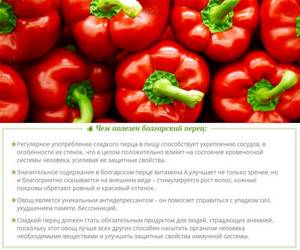
Selection and storage of sweet red peppers
The main criterion when choosing a red sweet pepper is its appearance - smooth skin with a glossy sheen, elastic and dense walls, a fresh tail (calorizator) without signs of drying out. If the pepper has been stored incorrectly for a long time, it becomes soft, the skin wrinkles, “dips” appear, then black spots. You should refuse to purchase such a vegetable.
Store sweet red peppers in the refrigerator, in a loosely closed plastic bag or without one, for no longer than a week. To preserve beneficial properties and long-term storage, peppers are frozen after washing and removing seeds. It is convenient to make several options - whole peppers, nested one inside the other - for stuffing, large slices or mugs - for baking, small cubes - for stewing.
Varieties of sweet red pepper
The most common and proven varieties in the middle zone are considered to be the varieties Winnie the Pooh, Bogatyr, Merchant, Lastochka, Californian Miracle, Atlant, Pharaoh, Miracle Tree, Cockatoo, Ox's Ear, Hercules, Ivanhoe and others. Red sweet peppers can be grown both in a greenhouse and in open ground.
Sweet red pepper in cooking
Red sweet pepper is very elegant and can be served effectively in salads and cold appetizers; even cut into strips, it looks great on any table. Red sweet peppers are baked, grilled, stuffed with meat and vegetable fillings, and used to soften meat by baking it along with large pieces. Red sweet pepper is used to prepare ratatouille, lecho, vegetable stew, it is dried, salted and pickled. The filling for the pepper can be cottage cheese or feta cheese with garlic and herbs; such a dish is an excellent appetizer or a complete and healthy light summer dinner.
You can learn more about bell peppers from Copying this article in whole or in part is prohibited.


